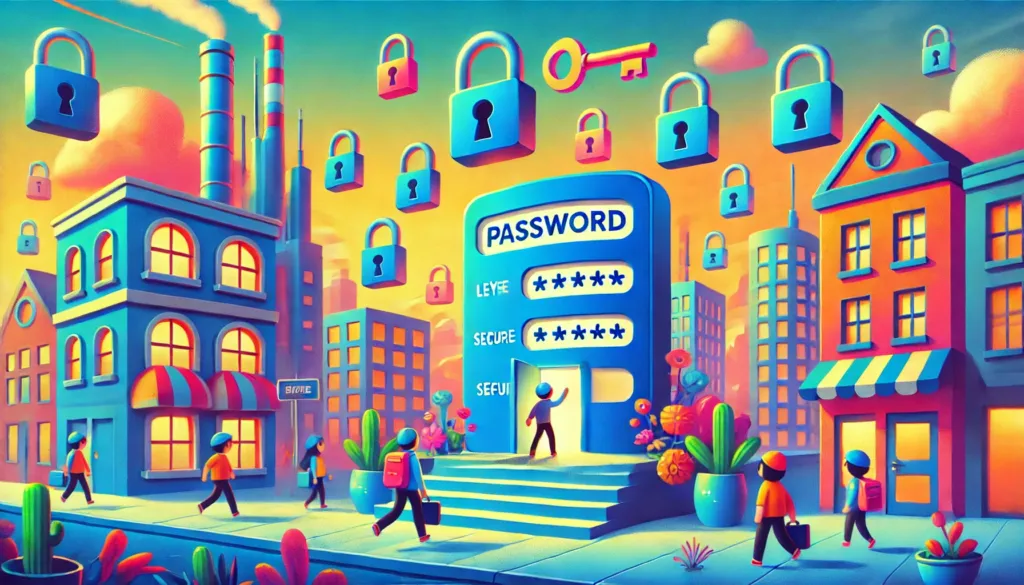Introduction
In an age where our lives are increasingly digitized, securing our online presence has never been more crucial. Every day, millions of people navigate numerous digital platforms, often without considering the potential security risks lurking behind their screens. From social media to financial transactions, our personal information is continually at risk of exposure to cyber threats. This reality makes understanding and implementing robust online security measures essential for anyone looking to protect their identity and maintain their reputation.
Cuneo Consulting, a leader in cybersecurity, emphasizes the necessity of vigilant online practices. As digital footprints expand and cyber threats evolve, the firm highlights the importance of adapting to these changes to safeguard personal and professional interests. This article, drawing on Cuneo Consulting’s expert insights, aims to arm you with the essential knowledge and tools to fortify your digital presence effectively.
We’ll explore critical areas such as managing privacy settings, creating secure passwords, and understanding your digital footprint. Additionally, we’ll provide actionable advice on dealing with common cyber threats and continuously educating yourself about the latest security protocols. Our goal is to ensure that you are not only aware of the risks but also equipped to protect yourself against them.
As we delve into these topics, remember that securing your online presence is not a one-time effort but an ongoing commitment. Let’s take the first step together towards a safer digital tomorrow.
Understanding the Risks

In the digital realm, ignorance is not bliss—it’s a vulnerability. Recognizing the array of threats that target our online activities is the first step towards effective protection. Cybersecurity isn’t just about preventing inconveniences; it’s about guarding against serious risks that can have long-lasting effects on your personal and professional life.
1. Hacking: This involves unauthorized access to your personal data, which can lead to identity theft, financial loss, and access to your personal networks. Hackers often exploit weak passwords, outdated software, or unsecured networks to gain access to your private information.
2. Phishing: One of the most common forms of cyber attacks, phishing occurs when scammers impersonate legitimate organizations via email, text messages, or other communication forms to steal sensitive information. These messages often look convincingly real and may urge you to act quickly, preying on panic and urgency.
3. Identity Theft: If your personal information is compromised, identity thieves can open accounts in your name, incur debt, and create a financial and administrative nightmare for you to resolve. This can also damage your reputation and credit rating, taking years to fully recover.
4. Malware and Ransomware: Malicious software can infect your devices, allowing cybercriminals to damage or lock your files, steal your data, or take control of your computer. Ransomware attacks, in particular, can lock you out of your systems, with attackers demanding a ransom to restore access.
Understanding these risks highlights why adopting strong cybersecurity measures is not just advisable but essential. Cuneo Consulting recommends staying vigilant and informed about the latest cyber threats to mitigate these risks effectively. Regular updates, cautious browsing, and informed decisions can shield you from the potential havoc wrought by these cyber threats.
Setting Strong Privacy Controls
Privacy settings are your first line of defense in the digital landscape. Properly managing these settings can significantly reduce your vulnerability to cyber threats. Here’s how you can take control of your online privacy across various platforms:
1. Understand Platform Settings: Each social media platform and online service has its own privacy settings. Take the time to understand and adjust these settings according to your comfort level with information sharing. For instance, consider who can see your posts, who can tag you, and whether your profile is visible to search engines.
2. Limit Sharing of Personal Information: Be cautious about the personal details you share online. Information such as your home address, date of birth, and phone number can be used against you if fallen into the wrong hands. Always question the necessity of sharing sensitive information before making it public or semi-public.
3. Manage Location Settings: Many apps track your location to provide services or targeted advertisements. Review and manage these settings to prevent unnecessary location tracking. Turn off location services for apps where it is not essential, and use “while using the app” options when possible.
4. Secure Your Connections: When adjusting your privacy settings, ensure you are using a secure connection. Avoid using public Wi-Fi for managing these settings or conducting any sensitive transactions. If public Wi-Fi must be used, consider employing a virtual private network (VPN) to encrypt your connection.
5. Regular Reviews and Updates: As platforms update their privacy policies and settings, revisit your preferences regularly to ensure they still align with your privacy expectations. This also applies after you download new apps or create accounts on new platforms.
Cuneo Consulting advises taking proactive steps in understanding and setting up your privacy controls as an effective measure to safeguard your online identity. By regularly updating your settings and being mindful of the information you share, you can maintain a strong defense against potential breaches of your privacy.
Creating and Managing Secure Passwords

Effective password management is crucial for protecting your online accounts and personal data. A strong password acts as a robust barrier against unauthorized access, making it one of the simplest yet most powerful security measures you can implement.
1. Strong Password Creation: A strong password is long, complex, and unique. It should include a mix of upper and lower case letters, numbers, and special characters. Avoid common words, phrases, or easily guessable information such as birthdays or anniversaries. Instead, consider using a passphrase made up of random words strung together, which is both easier to remember and harder to crack.
2. Use of Password Managers: Remembering a unique password for each of your accounts can be daunting. This is where password managers come into play. They help generate, retrieve, and store complex passwords for all your accounts in an encrypted database. You only need to remember one master password to access your entire list. Popular password managers like LastPass, 1Password, or Bitwarden can significantly enhance your password security while simplifying the login process.
3. Multi-Factor Authentication (MFA): Even the strongest passwords can be compromised. Multi-factor authentication adds an extra layer of security by requiring two or more verification methods to gain access to your accounts. This usually includes something you know (your password), something you have (a smartphone or security token), and sometimes something you are (biometrics such as fingerprints or facial recognition). Enabling MFA wherever possible can drastically reduce the risk of unauthorized access.
4. Regular Password Updates: While it’s important to create strong passwords, regularly updating them is equally critical, especially if a service you use has been compromised. Aim to change your passwords every few months and immediately update your passwords if you suspect any of your accounts may have been compromised.
By adhering to these best practices, as recommended by cybersecurity experts like those at Cuneo Consulting, you can significantly bolster the security of your online presence. Strong passwords and multi-layered authentication methods form the foundation of a secure digital identity.
Monitoring Your Digital Footprint

Every online action leaves a trace, known as your digital footprint. Whether it’s posting on social media, signing up for a newsletter, or simply browsing websites, these activities create a profile of your online behavior that can be tracked and analyzed. Understanding and managing this digital footprint is crucial for maintaining your privacy and security.
1. Understanding Your Digital Footprint: Your digital footprint includes everything from your public social media profiles to your comments on blogs and forums. Even the less obvious activities, like your search engine queries and browsing history, contribute to this footprint. It’s important to be aware of what information you’re leaving behind and how it could be used or misused.
2. Tools for Monitoring: There are several tools and services available that can help you see what information about you is available online. Google Alerts, for instance, can notify you whenever your name or other personal information appears online. Other specialized services can help you track and manage your digital footprint more comprehensively.
3. Controlling Your Digital Footprint: Start by googling yourself to see what information is readily available. If there are outdated or unwanted results, you can contact the website administrators to request removal. For further control, adjust the privacy settings on your social media accounts to limit what information is visible publicly.
4. Being Proactive: Always think twice before sharing information online. Ask yourself how necessary it is to share certain personal details and consider the potential long-term impact of making that information public.
By actively monitoring and managing your digital footprint, as advised by experts at Cuneo Consulting, you can prevent unwanted exposure and mitigate potential risks to your privacy and security. This proactive approach is essential in a world where digital activities are closely scrutinized and often exploited.
Dealing with Cyber Threats
In our digital world, the frequency and sophistication of cyber threats continue to grow. Being proactive in recognizing and defending against these threats is crucial for maintaining your security and protecting your online presence.
1. Recognize Common Cyber Threats:
- Phishing: These are attempts to trick you into providing sensitive information by pretending to be a trustworthy entity in an electronic communication.
- Malware: Malicious software intended to damage or disable computers and computer systems. It can be introduced via infected email attachments, downloads, or operating systems.
- Ransomware: A type of malware that involves an attacker locking the victim’s computer system files — typically through encryption — and demanding a payment to decrypt and unlock them.
- Social Engineering: Tactics used to deceive you into revealing personal information, including your passwords and banking information.
2. Implement Preventive Measures:
- Regular Software Updates: Keep your operating system, antivirus software, and apps updated to protect against known vulnerabilities.
- Secure Networks: Always use secure, encrypted connections when online. Avoid using public Wi-Fi for transactions or sensitive communications without a VPN.
- Education on Threat Recognition: Stay informed about the latest phishing and malware campaigns. Learn how to recognize suspicious links and emails.
3. Response Strategies:
- Immediate Action: If you suspect a security breach, change your passwords immediately and monitor your accounts for any unusual activity.
- Use Security Software: Employ comprehensive security software that includes antivirus, anti-spyware, and anti-ransomware protection.
- Backup Important Data: Regularly back up your data to secure locations. This can prevent data loss in the event of a cyber-attack and can help you recover more quickly.
4. Expert Advice and Resources:
- Cuneo Consulting recommends a multi-layered approach to security, combining technology solutions with informed behavioral practices. They provide resources and training for individuals and organizations looking to strengthen their cybersecurity defenses.
Proactively addressing these cyber threats by adopting recommended practices and utilizing available resources can greatly enhance your digital security posture. Being informed and prepared is your best defense against the evolving landscape of cyber threats.
Educating Yourself and Others
Cybersecurity is not just a personal responsibility but a community effort. Continually educating yourself and sharing knowledge with others are vital steps in strengthening our collective defense against online threats.
1. Continuous Learning:
- Stay Updated: The landscape of cybersecurity is constantly evolving with new threats and vulnerabilities emerging regularly. Subscribe to trusted cybersecurity newsletters, follow leading experts on social media, and participate in webinars to stay informed.
- Formal Education: Consider taking online courses or attending workshops that focus on cybersecurity. Many institutions and organizations offer training that ranges from beginner to advanced levels, helping you to understand the complexities of IT security.
2. Using Resources Effectively:
- Leverage Expert Resources: Utilize resources from cybersecurity firms like Cuneo Consulting, which offers guides, articles, and whitepapers on current security practices and trends.
- Cybersecurity Tools: Familiarize yourself with tools that can help monitor threats and protect your devices, such as antivirus software, firewalls, and encryption tools.
3. Teaching Others:
- Share Knowledge: Educate friends and family about the importance of cybersecurity. Simple tips like recognizing phishing emails, the importance of software updates, and the use of strong, unique passwords can significantly improve their online safety.
- Community Involvement: Engage with your community or workplace on cybersecurity topics. Offer to lead a session on basic online hygiene practices or share updates on recent cyber threats and how to avoid them.
4. Advocacy:
- Promote Best Practices: Advocate for better security practices at work and in your social circles. Encouraging others to adopt secure behaviors can lead to safer online environments for everyone.
By committing to continuous learning and sharing your knowledge, you empower not only yourself but also those around you to navigate the digital world more safely. This communal approach to cybersecurity significantly enhances overall protection against cyber threats.
Case Studies and Examples
Real-world examples can vividly illustrate the importance and effectiveness of robust cybersecurity practices. By examining specific case studies, particularly those involving Cuneo Consulting, we can see the practical impact of proactive security measures.
1. Successful Intervention by Cuneo Consulting:
- Case Study 1: A mid-sized enterprise faced a significant risk when their systems were targeted by a sophisticated phishing attack. Cuneo Consulting stepped in to provide immediate incident response, helping to mitigate damage by identifying and isolating affected systems quickly. Post-incident, they implemented stronger security protocols and trained staff, drastically reducing the company’s vulnerability to future attacks.
- Key Takeaway: Immediate response and ongoing education are critical in minimizing the impact of cyber attacks.
2. Individual Action Leading to Improved Security:
- Case Study 2: An individual noticed unusual activity in their financial accounts and used the tools and techniques recommended by cybersecurity experts to track down the breach source. With timely actions, such as changing all passwords and enabling multi-factor authentication, the individual prevented further unauthorized access.
- Key Takeaway: Individual vigilance and quick action are essential for personal cybersecurity.
These case studies underscore the real-world benefits of being prepared and responsive in the face of cybersecurity threats. They demonstrate that with the right knowledge and tools, both individuals and organizations can significantly enhance their defenses against cyber attacks.
Conclusion
Securing your online presence is an ongoing journey, not a one-time task. As we’ve explored, key steps such as setting strong privacy controls, creating and managing secure passwords, monitoring your digital footprint, and continuously educating yourself and others play a crucial role in protecting your identity and reputation online. The insights and examples from Cuneo Consulting have underscored the necessity of being proactive and vigilant in the face of evolving cyber threats.
Remember, every action you take to enhance your online security not only protects you but also contributes to the broader goal of creating a safer digital environment for everyone. By implementing these practices, you can significantly reduce your vulnerability to cyber attacks and take control of your digital life.


